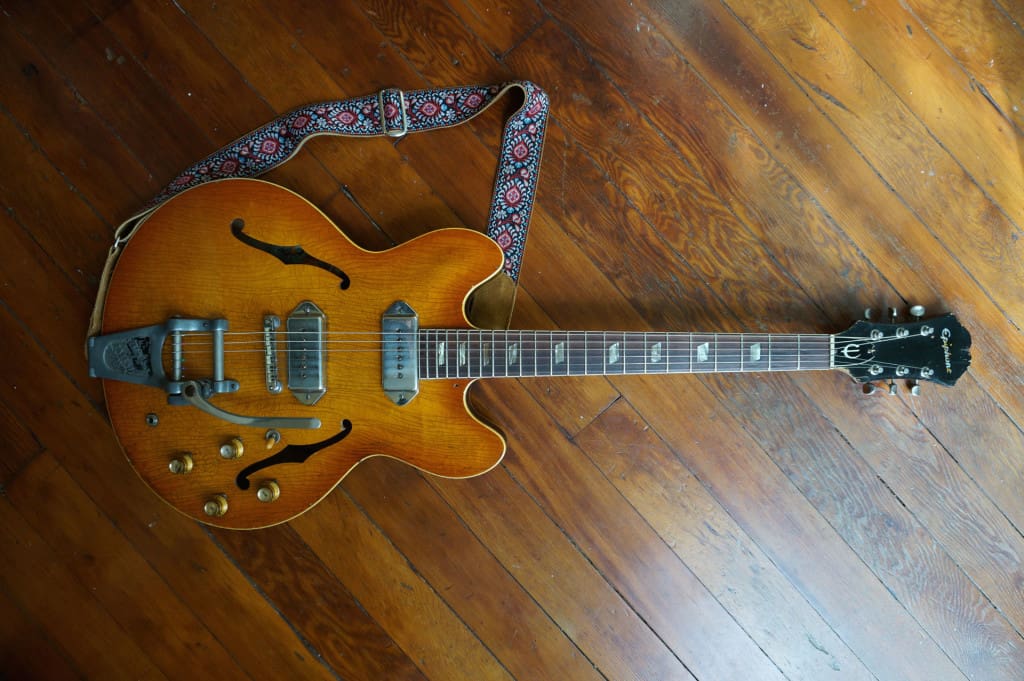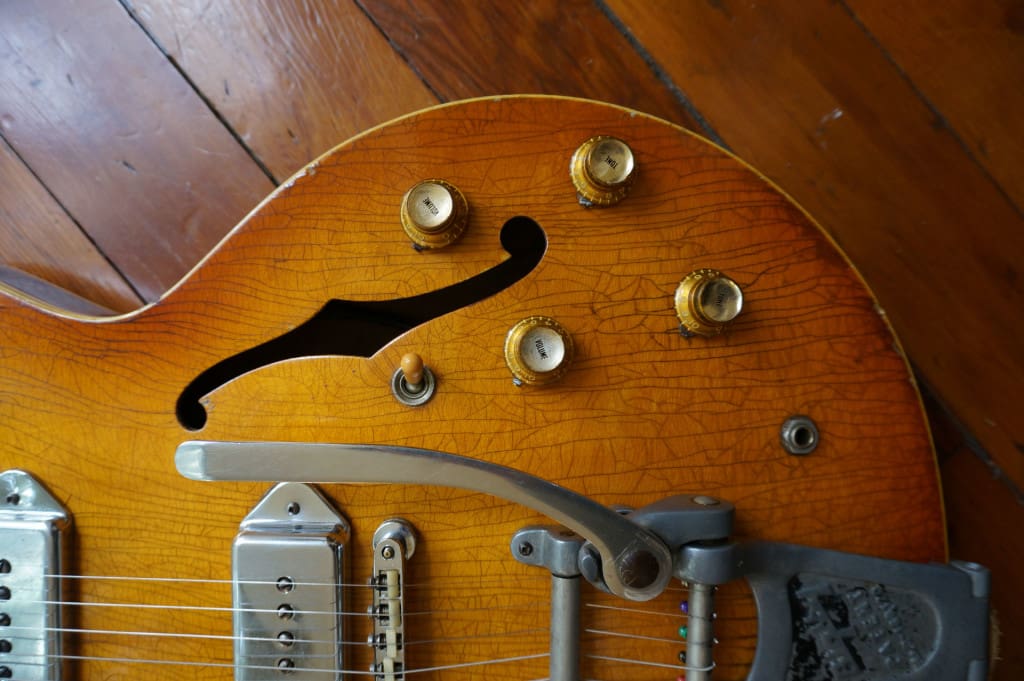
Six Strings from Stardom is a new column where we interview some of the unsung heroes of the guitar world, the hard working session and touring musicians. For our third installment, we sit down with Los Angeles based guitarist/producer Jason Abraham Roberts. Roberts, who is currently a member of Norah Jones’ band, has also played alongside artists such as Ben Kweller, Alberta Cross, Phil Lesh, Bob Weir, Mike Gordon, Leslie Stevens and Gold Star. Roberts also played in the band HYMNS.
Along the way, Roberts has managed to acquire an impressive quiver of instruments. During our conversation, we asked Roberts to imagine a scenario in which he’d be forced to thin out the herd. Here are his top five guitars, the ones he’d take to a deserted island.
Jason Roberts: If I had to choose my “desert island” guitar, it would have to be my 1965 Fender Jazzmaster that I bought about 10 years ago. It’s one of those guitars that feels perfect to me and I’ve found it to be the most versatile in my collection. I use it for every different style of music I play and it is my main guitar when I tour with Norah Jones. The neck is from December ’65, but the body is from early ’66. Everything on it is stock except for the amazing Mastery bridge that John Woodland installed for me.

I was on tour with my former band, HYMNS, and we were opening for The Lemonheads in Chicago. I had just ended a long-term relationship and figured that guitar shopping would be a good distraction! We went to Chicago Music Exchange and noticed about five sunburst Jazzmasters hanging up high, but for some reason this particular one caught my eye. I think it was the arm wear coupled with the fact that it looked a lot like one of Jeff Tweedy’s. I hadn’t planned on actually buying a guitar that day, but I fell in love with it immediately and had to have it!
My next choice would definitely be my 1965 “ice tea ’burst” Epiphone Casino. This guitar is an incredible player and the finish checking is like nothing else I’ve ever seen. Whoever owned it before me must have loved playing it as there is no lacquer left on the neck and the body has been so heavily weathered in the most brilliant way. It even has an early installed Bigsby!

At some point during my first tour with Norah, I started to check out guitar stores in upcoming cities online. On our way to St. Louis I saw this guitar on J. Gravity Strings’ site and couldn’t believe how beautiful it was. The next afternoon I walked over to the shop and asked if I could bring the guitar to soundcheck to have our tech, Andy Wolf, check it out. Andy loved it and if I hadn’t bought it right then, a couple of the other guys were ready to grab it!

When you look in the f-hole, you can see that the ripped, blue Epiphone label is covering an orange Gibson label. I guess it was meant to be a Gibson, but somewhere along the line became an Epiphone. It sounds INCREDIBLE.

Next up is my 1974 Fender Telecaster Deluxe, which used to be my #1, but it has been slightly demoted only because I’ve been really into having a tremolo lately. I got a pretty great deal on it through eBay when I was in college, before the price of these guitars got fairly high. I was really into Radiohead at the time and had seen Thom Yorke playing one and thought it looked interesting with the big Strat headstock and the wide-range humbuckers. It was my main guitar the entire time I was in HYMNS and it has been everywhere with me. Since the pickups in it are so tonally round and vibrant and it sounds great through any amp, I end up getting a lot of use out of it in the studio.

When I was 16 in North Carolina, one of my dad’s friends told me that he had bought a Gibson ES-340 in 1970 and never played it. It still even had the price tag hanging from it and the receipt was woven through the strings. I’d always loved my guitar teacher’s 335, so I had to get this!

It is basically the same guitar as a 335, but with a three-piece, laminated maple neck and block inlays. It was a serious upgrade from the 1989 American Strat that I had been playing since I was ten (and still own) and the neck feels like it was specifically made for me – thinner than most 335s. I love it and it has the most immediate and pure clean tone of any of my guitars.
Last but not least is my Paul Languedoc G2. When I was 12, I discovered that my cousin was playing drums in a band called Phish. His mother gave my brother a tape of their album, Rift, and we quickly became lifelong fans. We went to many shows and I was fascinated by Trey’s guitars, which were all handmade by their Front of House Engineer, Paul. As a kid I had a notebook where I collected any pictures of these guitars that I could find, and I would stare at them for hours on end.
When I was 14, I wrote Paul a letter. I told him I was a fan of his work and asked if I could buy one of his guitars. He wrote back with some info on his shop and the guitars and said that he didn’t build for anyone but Trey at the time. I kept in touch with him over the years and in 2009 he launched a site announcing that he would make 8-10 guitars a year for the public. In early 2013, I finally made it onto his list.
My wife and I went to his shop in Vermont to pick out the [mahogany] wood for my guitar and I finally got to play a Languedoc – something I had dreamed of for 17 years! About 9 months later, I had my very own.

This guitar is a truly unique, well-crafted, fully hollow-bodied instrument. It is an amazing tool to have in the studio because it gets such a wide variety of well-balanced tones and since there aren’t many of them around it always surprises engineers. Although I am still a Phish fan, I don’t tend to play that style of music, so it has been cool to see how well this guitar reacts to the styles of music that I do play, like ’60s rock and psych country.
![dawb-six_that_get_you-600x600[1]-3](https://www.fretboardjournal.com/wp-content/uploads/2016/07/dawb-six_that_get_you-600x6001-3.jpg)


